Entropion in dogs presents a concerning challenge for pet owners, as this eye condition can lead to significant discomfort and potential complications if left untreated. Understanding the underlying causes and recognizing the subtle symptoms are essential steps in managing this condition effectively.
However, the key to providing relief for your furry companions lies in exploring the various treatment options available. From surgical interventions to specialized care routines, ensuring your pup's eye health is crucial.
By addressing entropion promptly, you can help alleviate their eye irritation and enhance their overall well-being.
Key Takeaways
- Entropion in dogs causes inward rolling of eyelids, leading to discomfort.
- Symptoms include tearing, redness, and eye discharge, indicating the condition.
- Timely veterinary intervention and surgical correction prevent complications.
- Routine eye care, including surgery and cleaning, ensures relief and eye health for dogs.
Understanding Entropion in Dogs
Entropion in dogs is characterized by the inward rolling of one or both eyelids, leading to eye irritation. It is a condition commonly observed in puppies under one year of age due to developmental issues and breed predisposition. This malposition causes the eyelashes and hair to rub against the cornea, resulting in discomfort and potential corneal damage. Breeds with facial folds or loose facial skin, such as Bulldogs, Shar-Peis, and Retrievers, are more prone to this condition.
While puppies may outgrow entropion as their facial structures develop, early detection and intervention are crucial to prevent complications. Understanding the causes and risk factors associated with entropion is essential for prompt diagnosis and appropriate treatment to ensure the well-being of affected dogs.
Recognizing Symptoms of Entropion
Upon observing a dog affected by entropion, it is crucial to recognize specific symptoms indicative of this condition in order to seek timely veterinary care.
Symptoms of entropion in dogs include excessive tearing and a wet face, as well as frequent rubbing at the eyes. Redness, swelling, and eye discharge are also common signs. Additionally, dogs with entropion may exhibit chronic irritation, leading them to avoid opening their eyes fully.
It is important to note that if left untreated, entropion can pose risks such as corneal ulcers and vision problems. Therefore, prompt identification of these symptoms is essential for ensuring the well-being of your furry companion.
Importance of Timely Veterinary Consultation
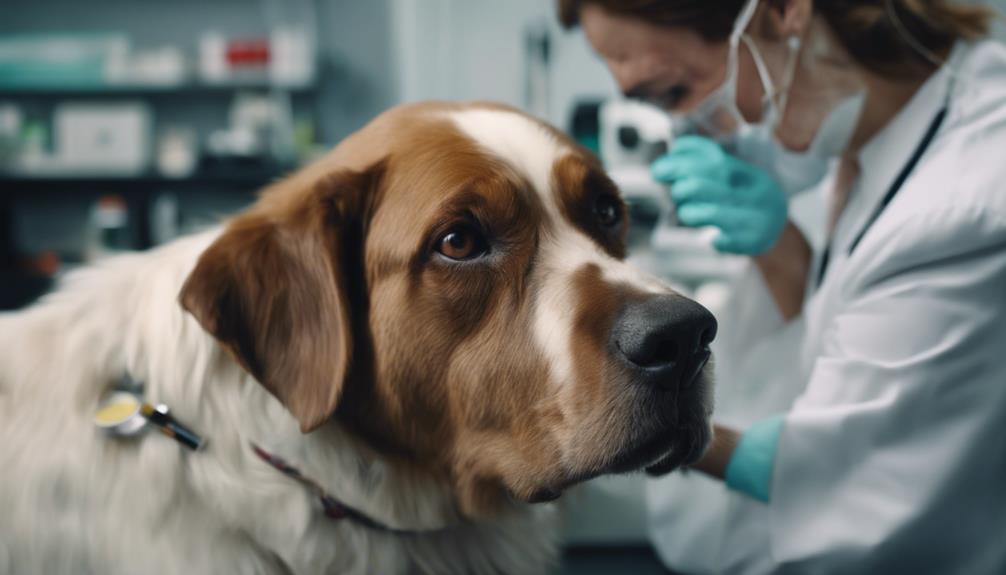
Seeking timely veterinary consultation is crucial when observing symptoms of entropion in dogs, as prompt intervention can prevent potential complications and ensure the well-being of the affected pet. A veterinarian can accurately diagnose entropion through a comprehensive eye exam and determine the most appropriate treatment plan.
Early consultation is essential to alleviate discomfort, prevent further irritation, and preserve the dog's vision. Delaying veterinary assessment may exacerbate the condition, leading to more severe consequences such as corneal ulcers or chronic eye issues.
Therefore, pet owners should prioritize scheduling a veterinary appointment at the first signs of entropion to address the problem effectively and enhance the overall quality of life for their furry companion.
Risks of Untreated Entropion
When entropion in dogs is left untreated, the potential risks and complications can significantly impact the overall health and well-being of the affected pet. One of the primary risks of untreated entropion is the development of corneal ulcers.
The constant rubbing of the eyelashes against the cornea due to the inward rolling of the eyelids can lead to abrasions on the corneal surface, potentially progressing to ulcers. Additionally, untreated entropion can result in chronic eye irritation, inflammation, and discomfort for the dog.
Over time, this chronic irritation can lead to more severe vision problems and even permanent damage to the eye. Seeking timely veterinary intervention is crucial to prevent these risks and ensure the health and comfort of your canine companion.
Surgical Solutions for Entropion
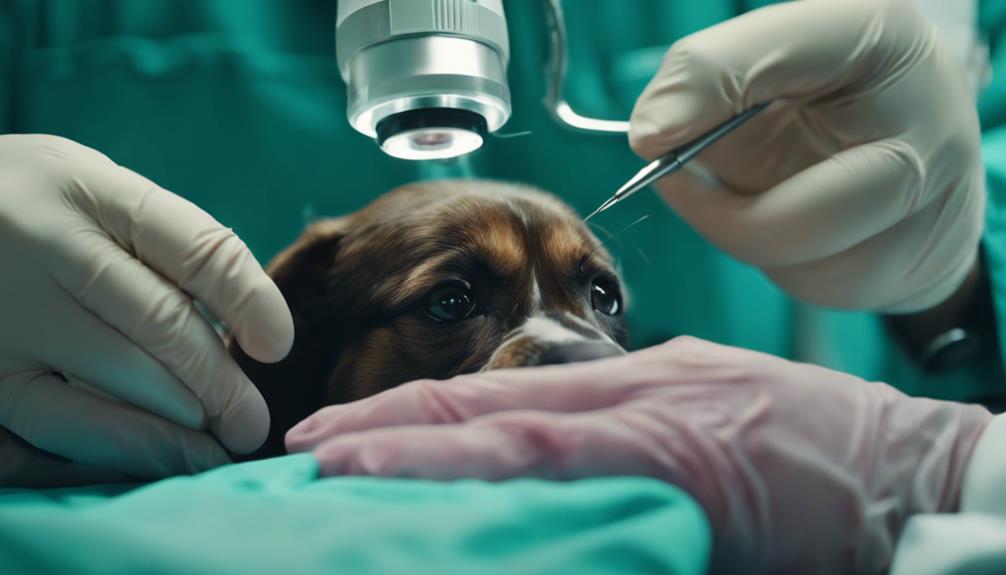
Surgical intervention is a key aspect in the treatment of entropion in dogs, offering effective solutions for correcting the inward rolling of eyelids. The most common surgical procedure for entropion is blepharoplasty, where the affected eyelids are surgically repositioned to prevent the rolling inward.
This surgery aims to restore the normal position of the eyelids, reducing irritation and discomfort for the dog. In cases where entropion is caused by genetic factors, surgical correction is often the most reliable and long-term solution.
It is essential for pet owners to consult a veterinarian specialized in ophthalmology to determine the best course of action and ensure a successful outcome for their furry companion.
Preparing for Entropion Surgery
In preparation for entropion surgery in dogs, thorough preoperative assessment and careful consideration of the specific anatomical adjustments required are crucial steps towards ensuring the successful correction of the inward rolling of the eyelids.
Prior to the surgical procedure, it is essential for the veterinarian to conduct a comprehensive eye examination to evaluate the severity of the entropion and assess any potential complications.
Additionally, pre-surgical measures may include the administration of ophthalmic lubricants to alleviate discomfort and reduce the risk of corneal damage.
Ensuring that the dog is in good overall health and discussing post-operative care instructions with the veterinary team are also important aspects of preparing for entropion surgery to promote a smooth and successful recovery process.
Non-Surgical Treatment Options
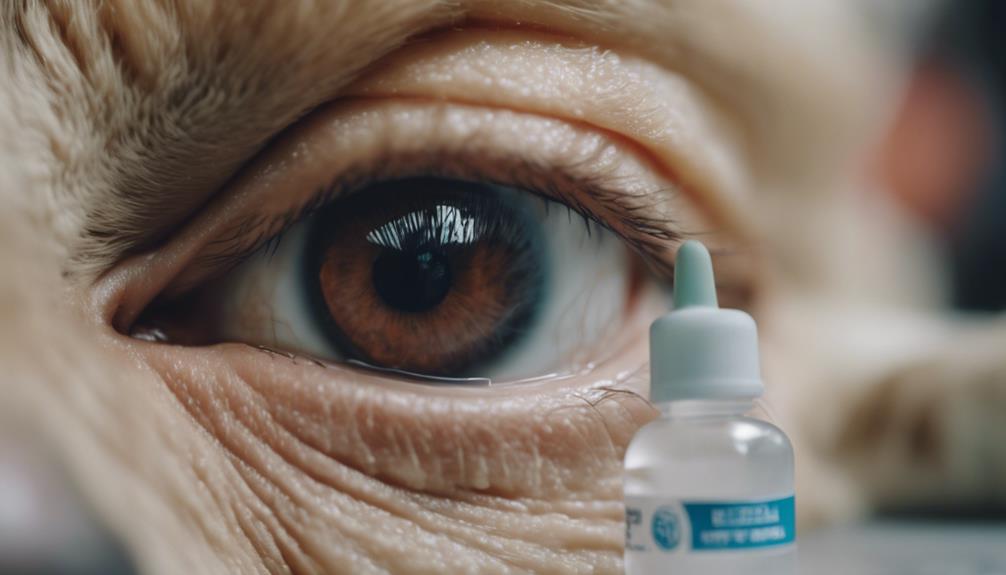
Exploring alternative approaches to address entropion in dogs can provide valuable options for managing the condition without resorting to surgical intervention. In cases where surgery may not be immediately feasible or preferred, non-surgical treatments can help alleviate symptoms.
Non-surgical options include the use of ophthalmic lubricants to reduce irritation and discomfort in the affected eye. Additionally, addressing underlying eye diseases, such as infections or inflammations, can help resolve entropion without the need for invasive procedures.
Consulting with a veterinarian is crucial to determine the most appropriate non-surgical treatment plan based on the individual needs of the dog and the underlying causes contributing to the entropion. Regular monitoring and follow-up appointments are essential to track progress and adjust the treatment as needed.
Preventing Recurrence of Entropion
To minimize the likelihood of entropion recurrence in dogs, diligent post-operative care and regular veterinary monitoring are essential components of effective prevention strategies. After undergoing surgical correction, it is crucial to follow specific measures to prevent the condition from reoccurring. Ensuring proper healing, managing any complications promptly, and monitoring the dog's eye health are key factors in preventing entropion recurrence.
| Prevention Measure | Description |
|---|---|
| Eye Health Monitoring | Regular check-ups to detect early signs of entropion recurrence. |
| Avoiding Eye Irritants | Prevent exposure to irritants that could lead to eye problems. |
| Nutritional Support | Provide a balanced diet rich in nutrients that support eye health. |
| Genetic Testing | If entropion is breed-related, consider genetic testing before breeding to prevent passing it on. |
Eye Health Maintenance for Dogs
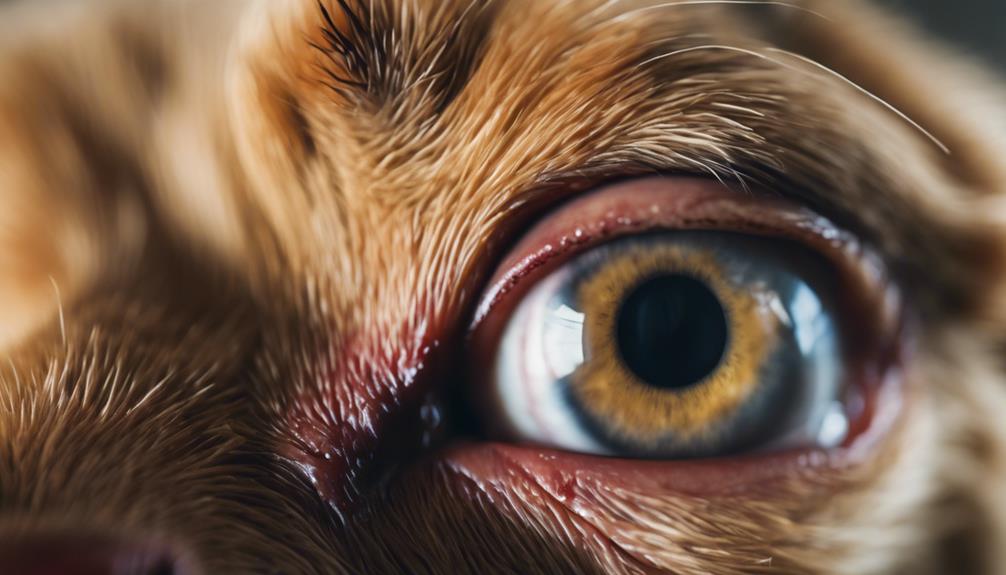
After addressing the measures to prevent the recurrence of entropion in dogs, maintaining optimal eye health through regular care and preventive strategies is crucial for overall well-being. To ensure your furry friend's eyes stay healthy, consider the following:
- Regular Vet Check-ups: Schedule routine eye exams to catch any issues early.
- Healthy Diet: Provide a balanced diet rich in essential nutrients like omega-3 fatty acids.
- Clean Environment: Keep your dog's living space clean to prevent eye irritants.
- Gentle Cleaning: Use vet-approved eye wipes to gently clean around the eyes.
- Avoid Irritants: Keep harmful chemicals and foreign objects away from your dog's eyes.
Eye Infections in Pets
Eye infections in pets pose a significant risk to their ocular health and overall well-being, requiring prompt attention and appropriate treatment. These infections can lead to discomfort, vision impairment, and in severe cases, permanent damage if left untreated. Common causes of eye infections in pets include bacteria, viruses, fungi, and environmental factors. Symptoms may include redness, discharge, squinting, and excessive tearing. Proper diagnosis by a veterinarian is crucial to determine the underlying cause and prescribe the most effective treatment. Below is a table illustrating common signs of eye infections in pets:
| Symptoms | Description |
|---|---|
| Redness | Indicates inflammation |
| Discharge | Yellow or greenish fluid |
| Squinting | Closing of one eye |
Common Eye Problems in Pets
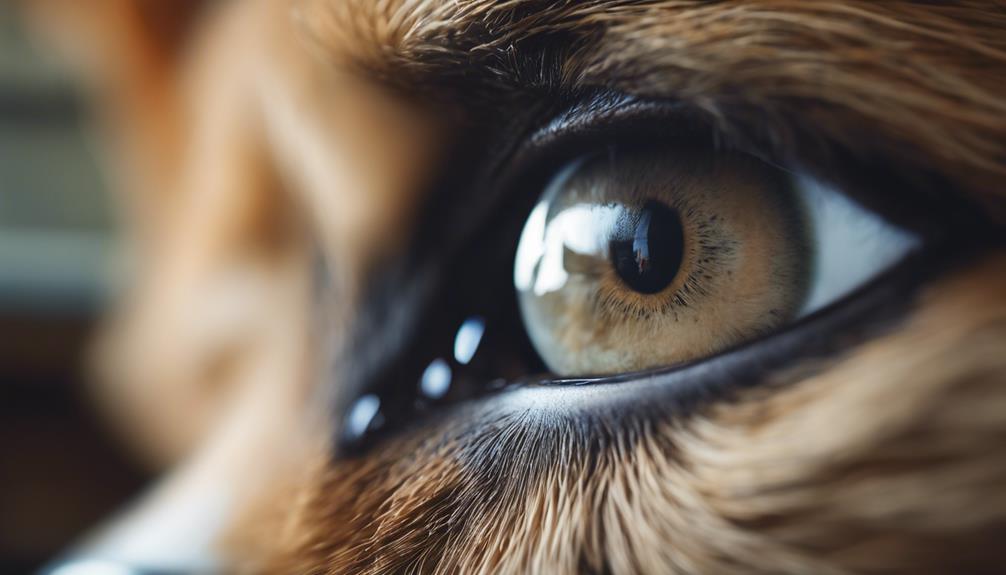
Pets may experience a range of common eye problems that can impact their ocular health and overall well-being, necessitating timely identification and appropriate management. These issues include:
- Conjunctivitis: Commonly known as pink eye.
- Cataracts: Clouding of the lens affecting vision.
- Glaucoma: Increased pressure within the eye leading to discomfort.
- Corneal Ulcers: Painful sores on the cornea.
- Dry Eye Syndrome: Insufficient tear production causing dryness and irritation.
Other Pet Health Concerns to Monitor
Monitoring the overall health of companion animals is essential for early detection and effective management of various medical conditions. Apart from common eye problems, pet owners should also be vigilant for other health concerns that may affect their furry friends. Below is a table highlighting some key health issues to monitor in pets:
| Health Concern | Species | Symptoms |
|---|---|---|
| Dog Diabetes | Dogs | Increased thirst, weight loss, lethargy. |
| Hydrocephalus | Dogs | Head pressing, seizures, vision issues. |
| Dog Coughing Up White Foam | Dogs | Persistent cough, foam production. |
| Liver Disease | Cats | Jaundice, vomiting, weight loss. |
| Respiratory Infections | Cats, Dogs | Coughing, sneezing, nasal discharge. |
Conclusion
In conclusion, recognizing the causes, symptoms, and treatment options for entropion in dogs is essential in providing relief for affected animals.
Timely veterinary consultation is crucial to prevent potential complications such as corneal ulcers and vision impairment.
Surgical solutions like blepharoplasty can effectively correct genetic predispositions, while maintaining overall eye health is key in preventing future eye issues.
Understanding and addressing entropion promptly can help give dogs with irritated eyes the relief they need.




